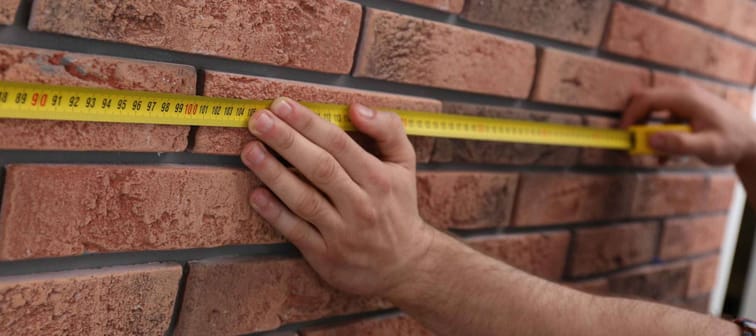What is square footage?
Square footage is simply the measurement of a square of space that is one foot long and one foot wide. It’s commonly used in the imperial and U.S. customary measurement systems to determine the size of a physical space.
In the U.S. it’s the most common way of indicating the size of a room or house.
Discover how a simple decision today could lead to an extra $1.3 million in retirement
Learn how you can set yourself up for a more prosperous future by exploring why so many people who work with financial advisors retire with more wealth.
Discover the full story and see how you could be on the path to an extra $1.3 million in retirement.
Read MoreHow to calculate square feet

Most people have no problem calculating the square footage of a square or rectangular room.
- Take out your handy measuring tape and measure the length and width of the space (in feet).
- From there, multiply the length by the width and you’ll have your square footage.
So, for example, if you have a room that is 20 feet long and 18 feet wide, you would find that your room is 360 square feet.
While that may seem easy enough, things can get a little more complicated when you’re working with irregularly shaped rooms.
In this case, try to break the room down into smaller squares and rectangles, then add those up to get the room’s total square footage.
Rounded walls present a challenge, but the site vCalc has a calculator you can use to determine the square footage of whatever unique shape your space takes.
You may still need to further break your room down into smaller, oddly-shaped chunks. For example, if you have a semicircular section, imagine the space as a circle, run the calculation, then divide the area in half.
How to calculate the square footage of a house

Now that we’ve dealt with single rooms, what about finding the square footage of your entire house?
The American National Standards Institute (ANSI) is responsible for developing voluntary consensus standards in the United States.
While its standards are not law, they are recognized by numerous housing and mortgage authorities and associations. Following ANSI’s recommendations, will help you find a number that would match a professional’s standards.
ANSI recommends that you always start by measuring the outside of your house. Start in a corner, work counterclockwise (this handy trick will ensure the numbers on your tape are right-side-up) and measure your way around the structure.
Be sure to measure to the nearest tenth of an inch to get an accurate figure. Once you’ve got all your measurements, mark them down on graph paper.
It’s important not to assume that each level of your home is the same. Draw separate floor plans for each level and account for floors that overhang or are recessed.
When you’re done outside, head indoors and determine what you need to change for each floor plan. A staircase from your ground floor to the second floor should only count once, for example, as the hole it punches in the floor above is not usable floorspace.
You can exclude any unfinished areas, such as your garage or porch. We’re just looking at your livable space, here.
What about my basement or attic?
To be counted toward your square footage, lofts or attics must be accessible, either through a stairway or by some other means. But simply having a climbing ladder for a loft isn’t enough to include it in the total square footage.
For a basement, ANSI standards don’t include below-grade or underground areas in square footage. So if your house has any areas that are below grade, they will not be counted toward your home’s square footage, even for finished basements.
Diversify your portfolio by investing in art
When it comes to investing, a diversified portfolio can lead to better returns. Masterworks' art investing platform has turned a previously inaccessible asset class into an actual option for individual investors. Think of artists like Banksy, Monet or Warhol. Get priority access and skip the waitlist here.
Skip the waitlistWhy square footage matters

The square footage of a home matters because it has influence over how much you pay in property taxes. And when you’re ready to sell your home, it will also play a role in how much you’ll be able to ask for it.
It can also come up if you’re looking at doing renovations or additional building in your home. You may need the current square footage to get approvals for a work permit.
That’s why it’s so important to make sure you follow the most accurate and standardized method of coming up with your home’s square footage.
Measuring the exterior walls, as architects typically do, will give you the dimensions of your space that most professionals would find as well. This will also prevent you from finding a major discrepancy in your numbers from those of a real estate agent, builder or any other professional you bring in to measure your home.
If you’re really not confident in your ability to accurately measure your home’s square footage, there’s no shame in calling in a professional. Getting the most accurate number is the top priority should you ever want to list your home, dispute what you pay in property taxes or build an addition.
The richest 1% use an advisor. Do you?
Wealthy people know that having money is not the same as being good with money. Advisor can help you shape your financial future and connect with expert guidance . A trusted advisor helps you make smart choices about investments, retirement savings, and tax planning. Try Advisor now.









